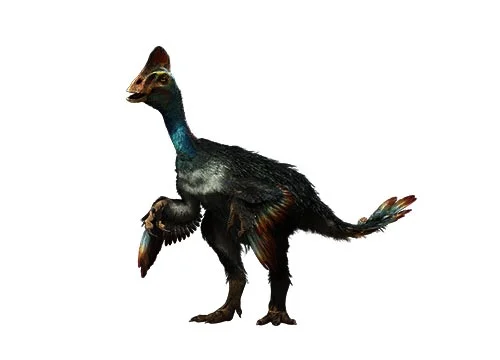Chirostenotes (Narrow handed)

Ky-ore-sten-o-teez
Charles Whitney Gilmore - 1924
Possibly Omnivore
Estimated 6 meters long
Small Theropod
C. pergracilis (type), C. elegans
Canada - Alberta - Dinosaur Park Formation
Late Cretaceous, 75 million years ago
Chirostenotes Facts
Chirostenotes is a genus of oviraptorosaurian dinosaur that lived during the late Cretaceous period, approximately 75 million years ago. It was named after its long, narrow hand bones, which were significantly different from those of other dinosaurs in its family.
Chirostenotes was a relatively small dinosaur, with an estimated length of about 6 meters and a weight of around 400 kilograms. It had a relatively short, robust body and a relatively large head with a sharp beak. It also had a small, bony crest on its head that may have been used for display purposes.
One of the most interesting features of Chirostenotes was its elongated hand bones, which were much longer than those of other dinosaurs in its family. These elongated hand bones are thought to have been used for grasping objects or for manipulating food.
Despite its relatively small size, Chirostenotes was a capable predator and may have been a scavenger as well. Its sharp beak and strong jaws would have allowed it to easily break open the shells of mollusks and crustaceans, while its long, sharp claws would have been ideal for digging into carrion.
The fossils of Chirostenotes have been found in North America and Asia, including Canada and Mongolia. This suggests that Chirostenotes was a relatively wide-ranging dinosaur, capable of adapting to different environments.
In conclusion, Chirostenotes is a fascinating dinosaur that offers important insights into the evolution of oviraptorosaurian dinosaurs and the adaptations they made in order to survive and thrive in their environments. Its elongated hand bones and other unique features set it apart from other dinosaurs in its family and make it a valuable subject for future research and study.



